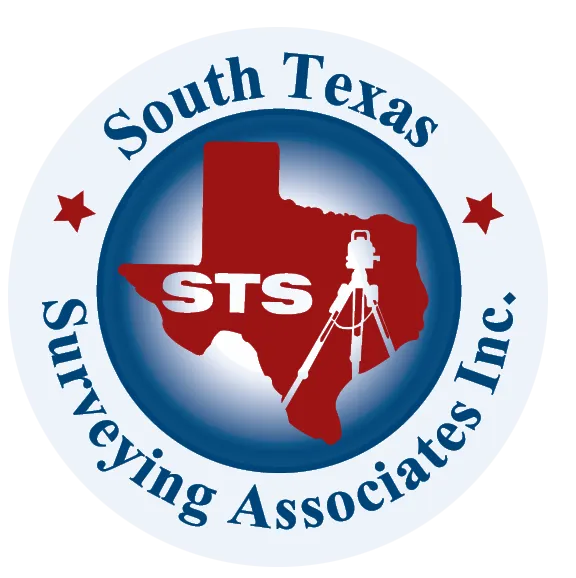Surveying Texas Since 1980 Family Owned, Customer Devoted | Firm #10045400 | 281-556-6918
See Our Latest Blogs

Right-of-Way Surveys for San Antonio's Expanding Commercial Corridors
"Texas, often referred to as the Lone Star State, is a thriving hub for economic growth and innovation, making it an attractive destination for commercial real estate investment." - Chris Evans
Right-of-Way Surveys for San Antonio's Expanding Commercial Corridors
San Antonio is experiencing significant growth in its commercial corridors, with new developments springing up to accommodate the city’s expanding population and business interests. As these developments spread along major roads and highways, understanding the boundaries and legal access points for properties is essential. One of the most important tools for ensuring successful, compliant development is a right-of-way survey. These surveys help identify land that is designated for public use, such as roads, sidewalks, and utility lines, while also defining the boundaries of privately-owned land. In this article, we’ll explore the importance of right-of-way surveys for San Antonio’s commercial corridors, and how they help developers and property owners avoid legal issues and ensure smooth project planning.
What is a Right-of-Way Survey?
A right-of-way survey identifies land that is legally designated for public use, such as roads, highways, sidewalks, utilities, and public access routes. It maps out the boundaries of public and private land, ensuring that developers know where public infrastructure ends and private property begins. Right-of-way surveys are critical for planning any project that involves construction or development near roads or other public pathways, as they ensure compliance with local regulations and prevent encroachments on public land.
In San Antonio, where commercial corridors are rapidly expanding, right-of-way surveys provide essential data for developers, helping them avoid legal disputes and ensuring that their projects are designed with respect for public infrastructure.
Why Right-of-Way Surveys are Crucial for San Antonio's Expanding Commercial Corridors
As San Antonio continues to grow, the city’s commercial developments are increasingly situated along major roadways and public infrastructure. Right-of-way surveys are critical in these areas to ensure that developers have a clear understanding of where public land ends and private development can begin. Here’s why right-of-way surveys are essential for San Antonio’s commercial corridors:
1. Defining Legal Boundaries and Preventing Encroachments
One of the primary reasons to conduct a right-of-way survey is to define the legal boundaries between public land and private property. In commercial corridors, where developments are often adjacent to public roads or highways, it’s essential to ensure that no structures or improvements encroach on public land.
For example, if a developer mistakenly builds a parking lot or building too close to a public roadway, it could lead to costly legal disputes and even require the removal or relocation of the structure. By conducting a right-of-way survey, developers can avoid these issues and ensure that their project remains compliant with local laws and regulations.
2. Ensuring Access to Public Infrastructure
In many cases, a right-of-way survey is necessary to ensure that commercial developments have access to public infrastructure, such as roads, sidewalks, and utilities. Without a clear understanding of where public rights-of-way exist, developers may inadvertently block access points or create conflicts with public services.
For commercial properties in San Antonio’s growing corridors, ensuring access to major roads and utilities is critical for both tenants and customers. A right-of-way survey provides the data needed to plan driveways, utility connections, and other infrastructure elements in a way that supports seamless access to public services.
3. Compliance with City Regulations
Right-of-way surveys are often required as part of the permitting process for commercial developments. San Antonio has specific regulations regarding how close buildings, parking lots, and other structures can be placed to public roads and highways. These regulations are designed to protect public safety, ensure access for maintenance and emergency services, and maintain the integrity of public infrastructure.
By conducting a right-of-way survey early in the planning process, developers can ensure that their project complies with all relevant setback requirements, zoning laws, and building codes. This not only prevents legal issues but also helps streamline the approval process, allowing construction to begin without delays.
4. Facilitating Infrastructure Improvements
In many cases, right-of-way surveys are used to support infrastructure improvements, such as road expansions, utility installations, or public transportation projects. For developers in San Antonio’s expanding commercial corridors, understanding where future infrastructure improvements may occur is crucial for long-term project planning.
For instance, if a road expansion is planned near a commercial development, a right-of-way survey can help developers design their project in a way that accommodates the future changes, minimizing disruption and ensuring that the property remains accessible.
Types of Right-of-Way Surveys for Commercial Projects
Different types of surveys may be required depending on the specific needs of a commercial project. Here are the most common types of right-of-way surveys used in San Antonio's commercial corridors:
1. Boundary Surveys
A boundary survey defines the exact perimeter of a property, ensuring that the development stays within its legal boundaries and does not encroach on public land. This is critical for commercial projects near public roads or highways, as it helps developers avoid legal disputes and ensures compliance with setback requirements.
2. ALTA/NSPS Land Title Surveys
An ALTA/NSPS Land Title Survey is a detailed survey often used in commercial real estate transactions. It provides comprehensive information about the property’s boundaries, easements, right-of-way access, and legal encumbrances. For commercial developments in San Antonio, this survey ensures that the property has clear access to public roads and complies with all local zoning regulations.
3. Easement Surveys
An easement survey identifies any existing easements on the property, including rights-of-way for public roads, utilities, or access routes. Easements can significantly impact the design and placement of buildings and infrastructure on a commercial property, so understanding where they are located is critical for project planning.
4. Topographic Surveys
A topographic survey maps the physical features of the land, including elevation changes, slopes, and drainage patterns. For commercial projects near public roads, understanding the topography of the land is essential for planning driveways, sidewalks, and parking areas. Topographic surveys also help ensure that the project complies with local drainage and stormwater management requirements.
5. Subdivision Surveys
In some cases, developers may be working on a larger tract of land that is being subdivided into smaller parcels for commercial development. A subdivision survey ensures that each parcel has legal access to public roads and utilities, and that the right-of-way for these services is properly documented.
How Right-of-Way Surveys Benefit Commercial Developers in San Antonio
Right-of-way surveys provide numerous benefits for commercial developers working in San Antonio’s expanding corridors. Here’s how these surveys help developers navigate the complexities of right-of-way access and compliance:
1. Reducing Legal Risks
One of the most significant benefits of conducting a right-of-way survey is that it helps developers avoid legal disputes related to property boundaries and public access. By clearly defining the legal limits of the property and any public rights-of-way, developers can ensure that their project does not encroach on public land or block access to public infrastructure.
2. Improving Project Efficiency
Right-of-way surveys provide critical data that helps developers optimize their project design. By understanding where public rights-of-way and easements exist, developers can design their project to make the most efficient use of the available land while ensuring compliance with local regulations. This helps prevent costly redesigns or delays caused by unexpected legal issues.
3. Ensuring Smooth Permitting and Approvals
In San Antonio, commercial developments must go through a permitting process that often includes a review of right-of-way access and compliance with city regulations. Conducting a right-of-way survey early in the planning process helps ensure that the project meets all local requirements, speeding up the approval process and allowing construction to begin without delays.
4. Supporting Long-Term Infrastructure Planning
For developers working in San Antonio’s expanding commercial corridors, understanding the city’s long-term infrastructure plans is critical. Right-of-way surveys provide valuable insights into how future road expansions, utility installations, or public transportation projects may affect the property. This information helps developers plan their project in a way that accommodates future changes, ensuring long-term success and accessibility.
Frequently Asked Questions (FAQs)
What is a right-of-way survey?
A right-of-way survey identifies land that is legally designated for public use, such as roads, sidewalks, or utilities. It defines the boundaries between public and private land, ensuring that commercial developments do not encroach on public infrastructure.
Why are right-of-way surveys important for commercial developers in San Antonio?
Right-of-way surveys are essential for ensuring that commercial projects comply with local regulations, avoid encroachments on public land, and maintain access to public infrastructure such as roads and utilities.
What types of surveys are used to identify right-of-way access?
Common surveys used to identify right-of-way access include boundary surveys, ALTA/NSPS Land Title Surveys, easement surveys, topographic surveys, and subdivision surveys.
How do right-of-way surveys help with legal compliance?
Right-of-way surveys define the boundaries between public and private land, ensuring that commercial developments comply with local zoning laws, setback requirements, and right-of-way regulations, preventing legal disputes.
How do right-of-way surveys improve project efficiency?
By providing detailed data about the location of public rights-of-way, these surveys help developers design their projects more efficiently, ensuring that buildings and infrastructure are placed in the most optimal locations while maintaining access to public roads and utilities.
When should I conduct a right-of-way survey for my commercial project in San Antonio?
It’s important to conduct a right-of-way survey early in the planning process to ensure compliance with local regulations and to prevent delays caused by boundary disputes or public access issues.
The Importance of Right-of-Way Surveys for San Antonio's Expanding Commercial Corridors
As San Antonio’s commercial corridors continue to grow, right-of-way surveys are becoming increasingly important for ensuring that new developments comply with local regulations and maintain access to public infrastructure. By conducting these surveys early in the planning process, developers can avoid legal issues, improve project efficiency, and ensure that their projects contribute to the city’s long-term growth and success. Whether you’re building a new retail center, office complex, or industrial facility, investing in a professional right-of-way survey is essential for protecting your investment and ensuring a smooth development process.
Delivering Land Surveys with Attention to Detail
George Owens
Commercial Broker

I have worked with many surveying companies, but South Texas Surveying stands out for their exceptional professionalism, attention to detail, and commitment to their clients.
Kim Wexler
Project Manager

Their accurate and thorough surveys make my job a lot easier, their ability to communicate effectively with all parties involved is commendable. I highly recommend South Texas Surveying.
James Cart
Homeowner

As a new homeowner, I was thoroughly impressed with the professional service provided by South Texas Surveying. I high recommend their services to any one buying a home in Houston.
Contact Us
Email: [email protected]
Office Address: 11281 Richmond Ave
BLDG J, Suite 101,
Houston, TX 77082
Office Hours: Mon – Fri 8:00am – 5:00pm
Office Phone Number: 281-556-6918
11281 Richmond Ave
BLDG J, Suite 101,
Houston, TX 77082
Firm Number: 10045400
Resources
© Copyright 2024 South Texas Surveying Associates
